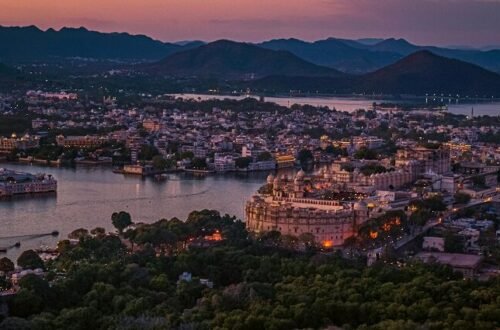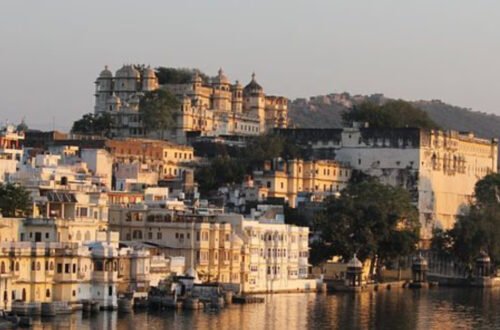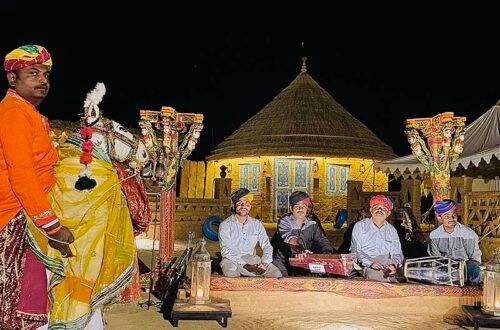Rajasthan has long captivated travelers with its royal palaces, vibrant culture, and endless desert horizons. While most tourists make a beeline for Jaipur, Jodhpur, or Udaipur, there’s a lesser-known gem that quietly tells tales of Rajput grandeur through its frescoes and havelis—Mandawa. Tucked away in the Shekhawati region, Mandawa is fast emerging as a heritage hotspot, often overlooked by mainstream travelers. For those craving a deeper, more intimate exploration of Rajasthan’s regal past, exploring Mandawa Tour Packages can be a revelation.
The Legacy of Mandawa: A Living Museum of Frescoes and Forts
Mandawa’s heritage charm lies in its sheer authenticity. Unlike polished palaces found in the state’s larger cities, the havelis of Mandawa offer an unfiltered window into 18th and 19th-century aristocratic life. Built by wealthy Marwari merchants, these havelis are adorned with intricate frescoes that narrate Hindu mythology, colonial encounters, and even everyday village scenes. The Mandawa Fort, standing tall at the heart of the town, offers panoramic views of the Shekhawati landscape and serves as a majestic reminder of the region’s historic importance.
Mandawa doesn’t just preserve architecture—it preserves stories. The peeling walls and faded colors don’t diminish its value; instead, they enhance the sense of lived history, making it an ideal destination for heritage travelers, cultural enthusiasts, and photographers seeking authentic experiences.
Why Mandawa Deserves the Title of “Hidden Heritage Capital”
- Sheer Density of Havelis: The town boasts a high concentration of painted havelis compared to any other place in Shekhawati, many of which are open to public viewing.
- Cultural Preservation: Locals maintain traditional art forms and often welcome visitors into their homes to share stories passed down through generations.
- Lack of Commercial Overwhelm: Mandawa still retains a quaint, laid-back charm, free from the commercial overdevelopment seen in Rajasthan’s larger cities.
- Film & Art Appeal: Its atmospheric streets and rustic elegance have attracted Bollywood and international filmmakers, further solidifying its cultural cachet.
When to Visit Mandawa for an Immersive Experience
The ideal time to visit Mandawa is between October and March. During these months, the weather is pleasant, making exploration comfortable. Many travelers combine Mandawa with other destinations on a Rajasthan Off-beat Tour, which often includes lesser-explored towns like Nawalgarh, Jhunjhunu, and Fatehpur—all within driving distance.
Off-the-Beaten-Path Attractions in Mandawa
While the famous havelis like the Murmuria Haveli, Gulab Rai Ladia Haveli, and Binsidhar Newatia Haveli are must-visits, a deeper exploration reveals:
- Local Artisan Workshops: Witness how frescoes are restored and miniature paintings are created.
- Traditional Markets: Browse for hand-embroidered textiles, antique furniture, and locally made perfumes.
- Village Walks: Engage with rural life just beyond Mandawa’s walls—watch potters, weavers, and farmers go about their day.
Planning the Perfect Mandawa Itinerary
A two-day stay is ideal for Mandawa. Day one can be dedicated to the main fort and key havelis, while the second day can be used to explore nearby villages and attend local cultural performances. To ensure an enriching experience, consider booking with a reputable Tour Operator in Rajasthan who understands the historical context and respects local sensitivities.
Local Cuisine and Hospitality
No Mandawa experience is complete without indulging in Shekhawati cuisine. Rich curries like gatte ki sabzi, ker sangri, and bajre ki roti offer a unique taste of the region’s culinary traditions. Many havelis have now been converted into heritage hotels that serve homemade dishes in traditional settings, enhancing the authentic feel of your stay.
Responsible Tourism in Mandawa
Visitors should be mindful of Mandawa’s delicate heritage. Avoid graffiti, support local artisans by purchasing their goods, and respect private residences. Some havelis are still family-owned and not open for public viewing, so always ask before entering. Responsible tourism ensures the town’s charm is preserved for future travelers.
Is Mandawa a Worthy Heritage Destination?
Absolutely. Mandawa may not have the polished gloss of Rajasthan’s more advertised cities, but that’s precisely what sets it apart. Its authenticity, cultural richness, and architectural depth earn it a rightful place as the hidden heritage capital of Rajasthan. Whether you’re a solo traveler, a history buff, or someone yearning for deeper connection to India’s royal past, Mandawa offers something truly irreplaceable.
In an age where travel often gets reduced to Instagrammable backdrops, Mandawa is a reminder of what it means to walk through history—where every street corner, crumbling wall, and quiet courtyard has a story to tell.





